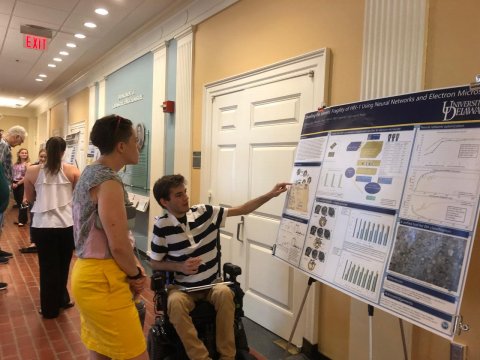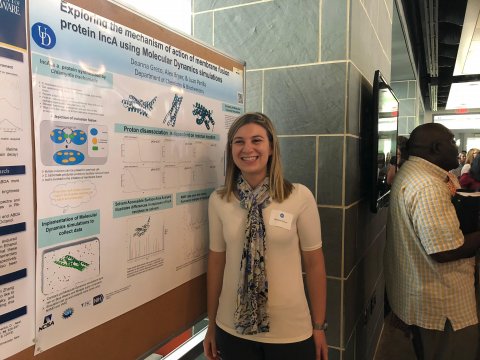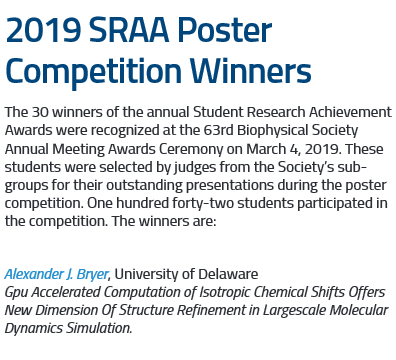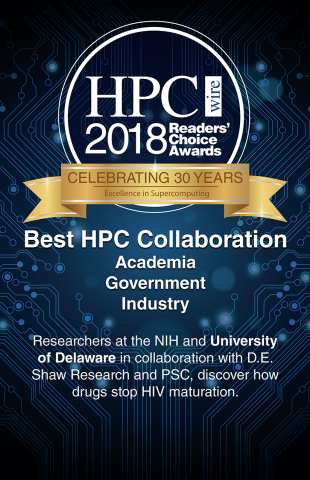Former postdoctorla researcher, Nidhi Katyal joins Shiv Nadar University as an Assistant Professor in the department of Chemistry. Congratulations to Nidhi.
Christian Lantz is awarded the 2020 Goldwater scholarship.
https://goldwater.scholarsapply.org/2020-goldwater-scholars-by-instituti...
Since December 2019, a novel coronavirus (SARS-CoV-2) that emerged in China has become a global pandemic. Research into the molecular basis of SARS-CoV-2 is now essential to provide understanding of viral entry and infection of human cells, a first step in developing novel drugs and vaccines to combat SARS-CoV-2. The research supported through this RAPID award will enable the development of an all-atom molecular dynamic simulation of the virus that includes realistic predictions of the envelope, membrane and spike proteins of the virus, as well as simulations of the complex surfaces of the human cells that the virus infects. This research could have immediate impact on steps taken to halt the spread of SARS-CoV-2. Simulation results will be broadly and quickly disseminated to ensure impact of the research. In addition, the investigators will use this as a training opportunity for students at all levels.
This project will use to state of the art tools of computational virology to provide bio-physical characterization of the SARS-CoV-2 virion, revealing information relevant to the function and potential targeting and disruption of the virus. The PI proposes a study of the full-size viral envelope which can establish the effects of specific components of the virus, including its bilayer lipid composition, shedding light on the need for coronaviruses to remodel the host cell membrane for successful infection. Additionally the characterization of the native SARS-CoV-2 viral surface proteins, which represent key functional and antigenic sites, will form a good basis for development of an infectious SARS-CoV-2 virion and a platform to investigate a mechanism of host cell entry, in which coronaviruses bind to CD13 receptors in lipid rafts. Study of glycosylated S protein, proposed as one of the aspects of the work, will reveal details of epitope masking by the glycan shield, relevant to vaccine and antibody design, as well as the role of viral glycans in host cell adhesion in a second mechanism of cell entry mediated by S binding to ACE2 receptors. The work could have immediate impact of the current pandemic.
This RAPID award is cofounded by the Molecular Biophysics Program in the Division of Molecular and Cellular Biosciences and the EPSCoR Program.
Taken from: https://phys.org/news/2019-06-key-bacterial-fusion.html
Most people know Chlamydia as the venereal disease that can cause infertility if left untreated. But for researchers studying the causative agent, Chlamydia trachomatis, it's a bacteria with intriguing properties. Rather than grow and replicate in the blood or other bodily fluids, C. trachomatis get inside cells where they multiply. In most people, this trait keeps the bacterium from being detected by the immune system, and helps the disease fly under the radar; not everyone infected with Chlamydia will show symptoms of the disease. But managing to stay alive inside an infected cell is no small feat for bacteria.
A synergistic collaboration between computational and experimental scientist have shed light in the mechanism employe dby C. trachomatis to fuse in the interior of living cells. The ability of C. trachomatis to fuse is directly related to its pathogenicity and therefore a deeper knowledge of the molecular mechanisms enables new target for the development of new therapeutic leads.
Undegraduate student Deanna Greco (class of 2020') has been awarded the Barry Goldwater Scholarship (https://goldwater.scholarsapply.org/2019-goldwater-scholars-by-instituti...).
Second year graduate student Alex Bryer has won the poster competition at the Biophysical Society Meeting.
The article “Dynamic Regulation of HIV-1 Capsid Interaction with the Restriction Factor TRIM5α” was published Oct. 17 in the Proceedings of the National Academy of Sciences.
In addition to Quinn, Polenova and Perilla, the authors are Mingzhang Wang, Matthew P. Fritz, Brent Runge and Chaoyi Xu, all doctoral students at UD, and Jinwoo Ahn and Angela M. Gronenborn of the Pittsburgh Center for HIV Protein Interactions and the Department of Structural Biology at the University of Pittsburgh School of Medicine.
Gronenborn is a University of Pittsburgh School of Medicine Rosalind Franklin Professor and chair of the Department of Structural Biology. She is the director of the National Institutes of Health-funded Pittsburgh Center for HIV Protein Interactions, which brings together high-caliber scientists and facilities to study the HIV virus and its interactions with host cell proteins.
Our group has been recognized in the annual HPCwire
Readers’ and Editors’ Choice Awards, presented at the 2018 International Conference for High Performance
Computing, Networking, Storage and Analysis (SC18), in Dallas, Texas. Specifically we have been awarded the price for our collaborations with researchers at the Pittsburgh Center for HIV Protein Interactions, and in collaboration with D.E. Shaw Research and PSC, discover how drugs stop HIV maturation (Nature Communications).
nomination and voting process with the global HPCwire community, as well as selections from the HPCwire
editors. The awards are an annual feature of the publication and constitute prestigious recognition from the HPC
community. These awards are revealed each year to kick off the annual supercomputing conference, which
showcases high performance computing, networking, storage, and data analysis.
These annual awards are a way for our community to recognize the best and brightest innovators within the global HPC community.
We were nominated in the Best HPC Collaboration (Academia/Government/Industry) by the Pittsburgh Super Computing center.
Work performed by Juan R. Perilla, has previously won the 2013 HPCWire Reader's award for Best Use of HPC Application in Life Sciences.
The 2018 Categories Include the Following:
* Best Use of HPC Application in Life Sciences
* Best Use of HPC in Physical Sciences
* Best Use of HPC in Manufacturing
* Best Use of HPC in Energy
* Best Use of HPC in Automotive
* Best Use of HPC in Entertainment
* Best Use of HPC in Financial Services
* Best Use of High Performance Data Analytics
* Best Use of AI (Deep Learning/Machine Learning)
* Best Use of HPC in the Cloud (Use Case)
* Best Cloud Platform for HPC
* Best HPC Server Product or Technology
* Best HPC Visualization Product or Technology
* Best HPC Interconnect Product or Technology
* Best HPC Programming Tool or Technology
* Best HPC Cluster Solution or Technology
* Best AI Product or Technology
* Top 5 New Products or Technologies to Watch
* Best HPC Collaboration (Academia/Government/Industry)
* Top Supercomputing Achievement
* Top HPC-Enabled Scientific Achievement
* Top Energy-Efficient HPC Achievement
* Top 5 Vendors to Watch
* Workforce Diversity Leadership Award
* Outstanding Leadership in HPC (Individual)
Nominations are accepted from readers, users, vendors – virtually anyone who is connected to the HPC community and is a reader of HPCwire.




